Backyard ponds can serve as an amazing centerpiece and talking point at your next garden party. You can fill them with plenty of colorful fish and plants, ensuring that they are the focal point of your yard. Pond fish are vital in providing color and vibrance to your pond.
While you can keep a backyard pond without fish, they are a great addition and can even help with keeping the mosquitos at bay during the hot weather. Pond keepers tend to name their fish and care for them just like they would for any other pet.
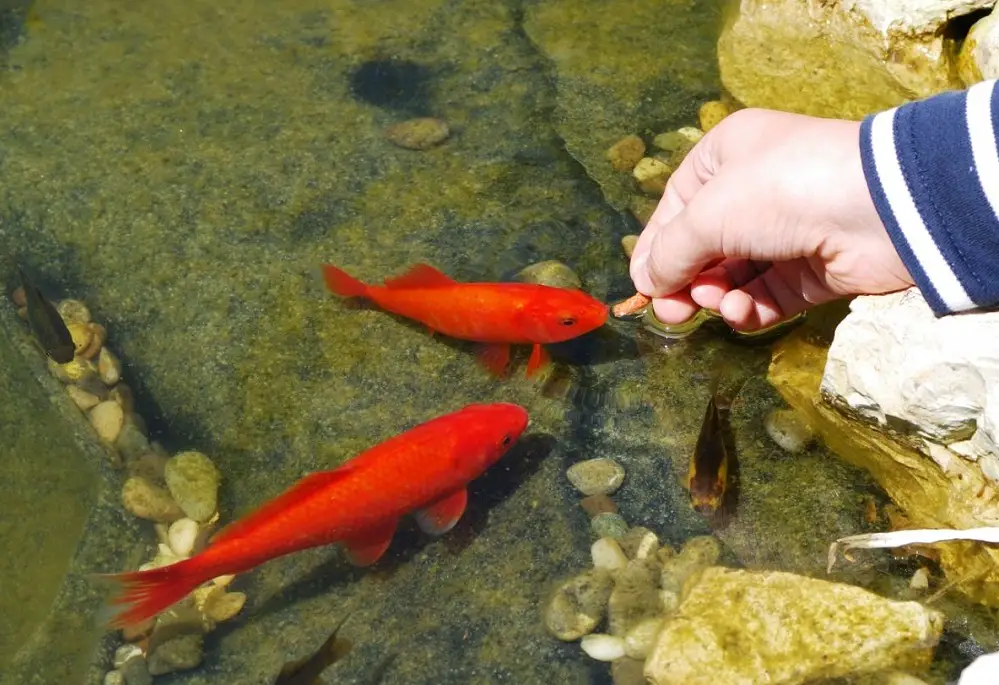
Not all fish can be kept in ponds and are capable of living in backyard water conditions. Moreover, some can be kept in backyard ponds but come with an amazing list of demands that make them more trouble than they’re worth.
Today we’re going to be looking at the different types of fish that you can have in your backyard pond, depending on the type of pond you have.
Different types of backyard ponds
You might not know this if you aren’t a pond keeper, but there are actually multiple types of ponds that you can add to your backyard. These will differ in multiple ways, such as their purpose, size, and vegetation.
We’re going to be focusing on the four main types of ponds that you might find in someone’s backyard.
Koi ponds
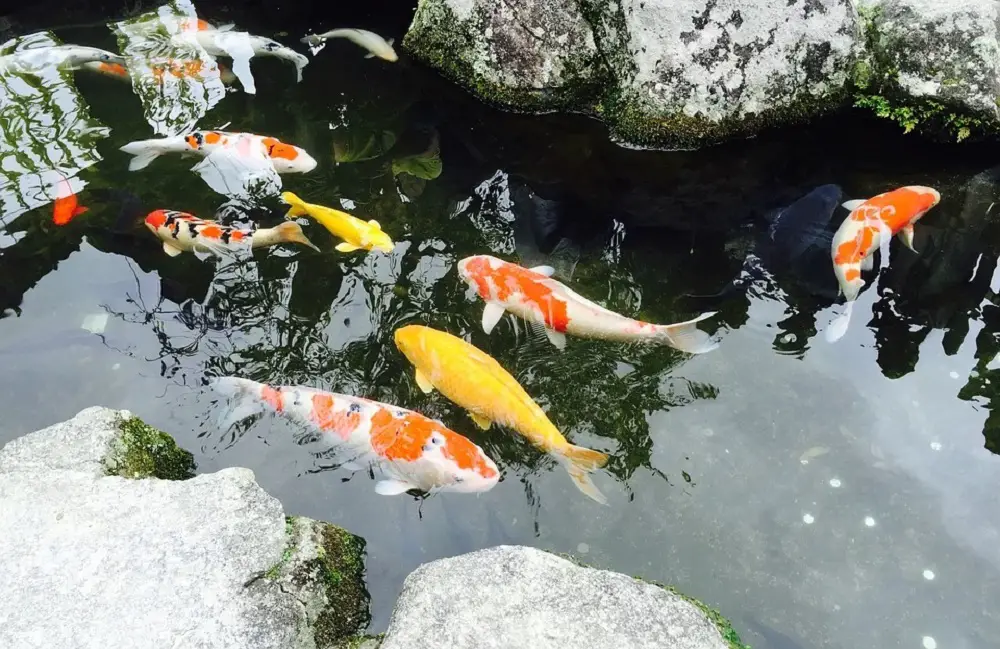
Koi is a type of fish that has been hybridized with carp. They are selectively bred and have been since the 1800s, both for their magnificent colors and shape.
Koi ponds need to be big to allow for the koi fish to grow and thrive. Ideally, this pond should be at least 1000 gallons in size with lots of aeration to keep the water oxygenated. You also need an excellent filtration system to keep up with koi waste.
This type of fish is rather hardy and can over-winter in a frozen pond, as long as you keep a hole in the ice with an air pump and a floating heater. This will allow the fish to remain in hibernation until the weather begins to warm up again.
Koi fish can die over the winter if the ice doesn’t have a hole in it, as gases such as hydrogen sulfide and carbon dioxide can get trapped and poison them.
Koi fish tend to scavenge at the bottom of their ponds in plants and vegetation, sometimes uprooting water lilies. They enjoy eating floating vegetation such as water lettuce and hyacinths.
You’re best to keep koi fish in a pond without aquatic plants, so if you want lots of aquatic plants in your backyard you might not want a koi pond. Koi fish can be kept in earth-bottom ponds, as this is what they’re typically raised in from koi farms.
The minerals from the earth promote the best development of koi’s coloration. The earth also fills the water with algae which acts as a great food source for your koi fish. However, these ponds are not the best if you want your koi to be marveled at.
Koi fish will constantly stir up the earth into the water, making it cloudy and muddy. This will make it very difficult to see them and enjoy their presence. Of course, the best fish to stock your koi pond with is koi fish.
Natural farm ponds
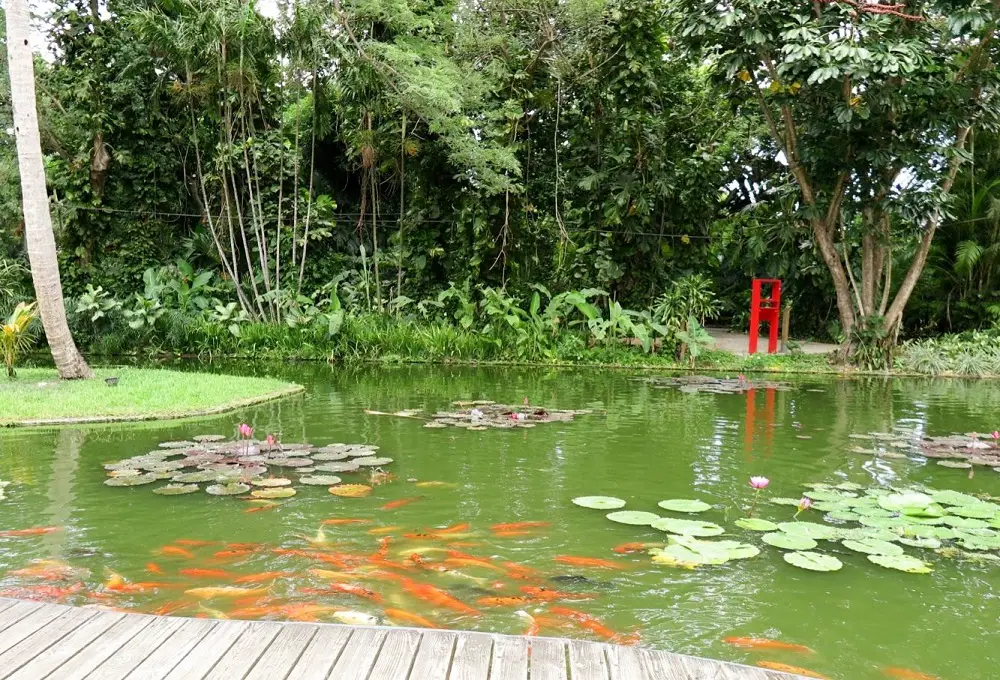
Natural farm ponds have been dug by farmers for cattle to drink from or to catch any water rolling off the fields from rainfall.
These are not rubber-lined like common garden ponds but rather lined with clay and soil. The clay seals the pond so that there are no leaks and the water all remains in one place.
Natural ponds are often the home of native game fish. In North America, these would include Sunfish, Bass (both large and smallmouth breeds), Crappie, and Pickerel.
Native game fish are incredibly territorial and can become aggressive towards people and animals intruding on their space. Some are even classified as ferocious predators.
Pickerel and bass are attracted to goldfish due to their brightly colored look. Plus, goldfish are rather slow-moving and therefore easy prey. Goldfish could live in natural farm ponds, but they wouldn’t last long with other native fish.
You can add carp to a natural farm pond to help control vegetation. This is due to the fact that carp are scavenger fish and will always be looking for food at the bottom of your pond. Like koi, carp will mix up the water making it very murky and difficult to see within.
Carp also make it difficult to keep any pond plants such as water lilies. This is since they’ll feed on any plant they find that they can uproot. So, if you want to keep garden plants, carp is not the best idea for your natural pond.
Native fish don’t blend well with goldfish, koi, or any other colorful fish or fish with long fins. If you’re keeping native fish in your natural farm pond, be sure to keep them only with other native fish that they will get along with - or at least tolerate.
Goldfish ponds
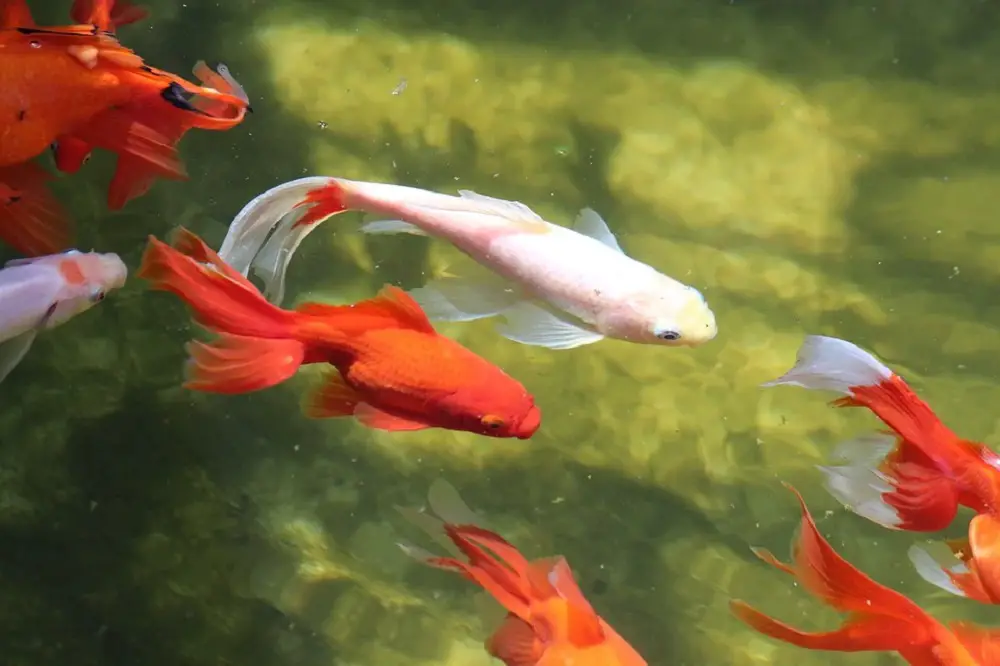
Goldfish ponds are incredibly popular and they come in a great variety of colors and shapes. Goldfish have been selectively bred throughout the years to create new varieties of goldfish, allowing us to stock this type of pond with lots of sub-breeds.
No matter what the breed, goldfish are known for their bright color patterns and long fins. There are so many varieties of goldfish out there that keepers even consider some breeds fancier than others!
Goldfish won’t grow to the size of koi fish, but they can still grow rather large. Goldfish tend to grow to the size of whatever you keep them in.
For example, if you were to keep a goldfish in a tank before a pond, once introduced to the latter they would grow exponentially larger than the tank they once inhabited.
This allows you to decide the size of the pond you want rather than having to get one of a certain size like you need to do for koi fish. Below we have listed a few of the most common varieties of goldfish.
Comets: this is the most common type of goldfish found in most pet stores. They have long and thin bodies with small fins. They most often come with orange coloring, but can also be found with orange, red, and white patterns as well. This is called the Sarasa Comet.
Shubunkins: the Shubunkin looks similar to the Comet goldfish in terms of its shape, but this type has a much different coloring. Shubunkins are blue with patterned scales of dark blue, red, white, black, or red colors.
Fantails: fantail goldfish are shorter than the Comet and have a more rounded body. Their tails are split into two fins, making it look like a fan. These can come in a variety of colors such as orange, white, red, and black.
Orandas: this is another type of fantail that comes with prominent bumps on their heads.
Lionheads: another type of fantail goldfish, lionfish is similar to the oranda with its bumpy head. However, a lionhead won’t have a dorsal fin.
Bubble-Eye: with a similar shape to the fantail, bubble-eye goldfish have liquid-filled sacs that protrude below the eye sockets. This makes their eyes point upwards and much further away from their face. This is a very delicate variety of goldfish.
Ryukins: this is another goldfish that is incredibly similar to the fantail shape. However, the ryukins goldfish will have a sharp slope from their heads to their dorsal fins.
Ranchu: the ranchu is often mistaken for the lionhead goldfish, but you can distinguish the two by the placement of their tail fins. While the lionhead’s body extends to the tail fin, the ranchu’s body drops dramatically from its back to the tail fins.
Black Moors: again, the black moors have the same body as the fantail. However, this fish is solid black with no other coloring. It also has bulging eyes from its face.
Pearlscale: the pearlscale goldfish is shaped like a fantail, but it has dome-shaped scales that are pearlescent all over its body. This is where it gets its name from as they resemble pearls.
Goldfish are slow swimmers and don’t like fast water. For this reason, waterfalls are not advised for ponds with goldfish in them. Goldfish are also quite delicate and can easily be damaged by aggressive fish.
Most goldfish should be kept separate from other types of fish, although comets can be kept with koi fish. You might need to bring your goldfish inside during the winter months depending on their variety.
Water gardens
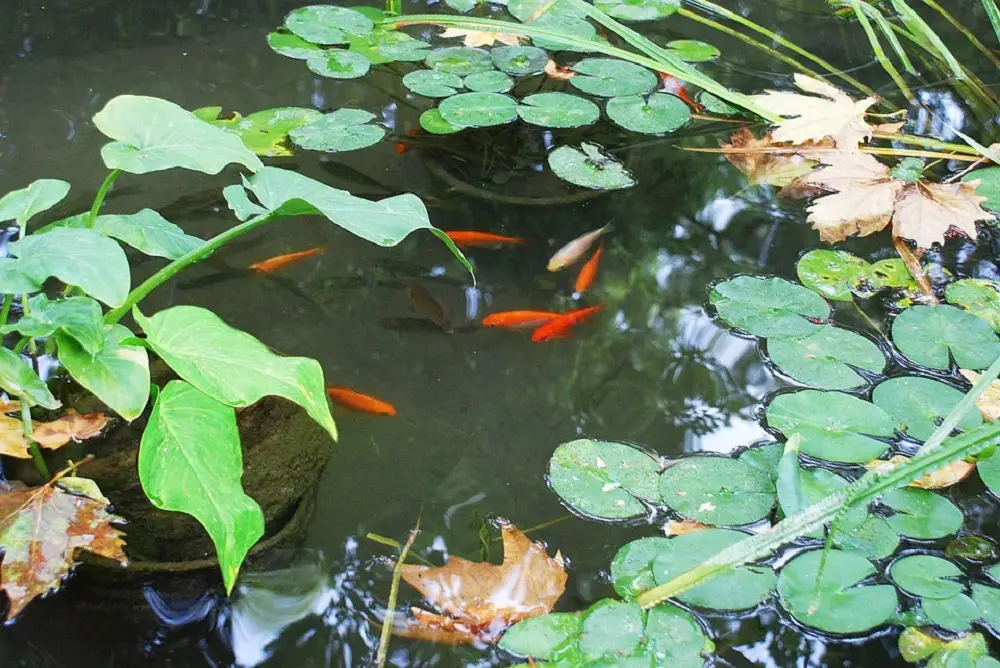
Finally, water gardens are ponds full of potted and floating plants such as water lilies and bog plants. Koi and carp like to unroot any plant that they can find, so they’re not the best for water gardens.
Comet and shubunkin goldfish are best for water gardens as they’re hardy enough to withstand harder parts of the plant, as well as colorful and pretty to look at. You can even add a fountain or waterfall to a water garden with comets and shubunkins.
These goldfish can also be kept in their ponds all year round without having to be brought inside. However, you will need to keep a hole in the ice if it freezes over.
This allows oxygen to enter the water and harmful gases to escape. Using a pond heater will keep your pond safe throughout the entire winter.
